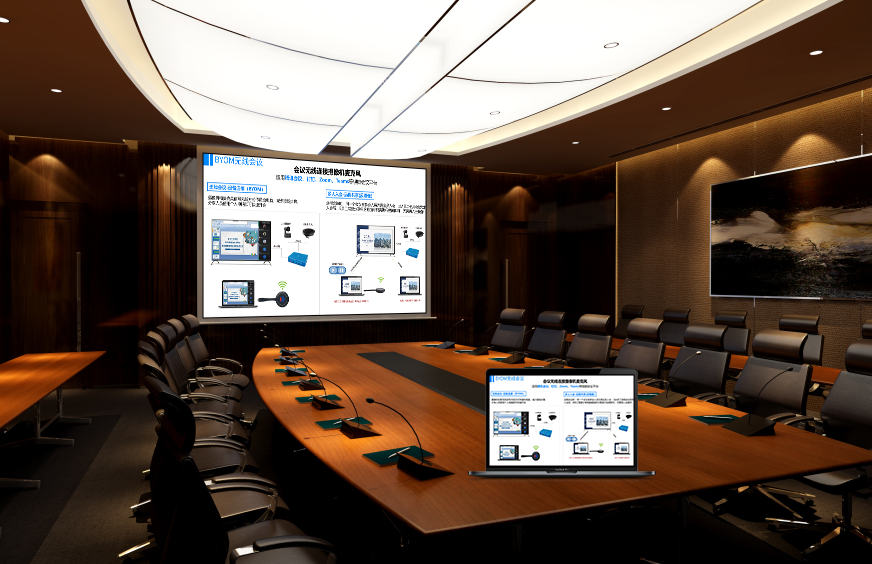AirPlay: Screen Mirroring Solution for Apple Devices
The AirPlay solution is exclusively designed for Apple devices. No additional software installation is required—content such as photos, videos, and documents on iPhones, iPads, and MacBooks can be effortlessly cast to large screens. With simple and stable operation, it is suitable for office, teaching, and home scenarios.
Instant Connection for Apple Devices, Zero Operation Barrier
All Apple devices come with the native AirPlay function, eliminating the hassle of finding compatible tools.
- For iPhones and iPads: Swipe down from the top-right corner of the screen to open the Control Center, then tap “Screen Mirroring”.
- For MacBooks: Open the menu bar and click the “AirPlay” icon—you can spot the receiving device at a glance, and a single tap completes the connection, taking no more than 3 seconds in total.
Both new and old Apple devices are compatible. Whether it’s an old iPad or a new MacBook Pro, the connection remains smooth—no need to worry about device models.
Clear and Smooth Mirroring, High-Quality Content Preservation
When casting photos, colors are reproduced naturally. When sharing travel group photos during family gatherings, facial expressions of people and details of landscapes are clearly visible. Video casting supports 1080P high definition; casting TV shows to the TV at home delivers sharp, non-blurry images with synchronized audio and video—there’s no “audio lagging behind video” issue.
In office scenarios, when casting project documents from a MacBook to a large screen, small text in spreadsheets and lines in charts remain sharp. There’s no need to lean close to the screen to point out details, ensuring smooth communication.
Multi-Scenario Adaptation, User-Friendly Experience
- Teaching Scenarios: Teachers can cast courseware from iPads, and even when walking to the back of the classroom, they can flip pages with their fingertips. When highlighting key points by circling on the iPad, the red circles are synchronously displayed on the large screen, making it easy for students to see at a glance. Students can cast their assignments from iPhones, allowing the whole class to review and comment on the large screen instead of crowding around small phone screens.
- Office Scenarios: MacBooks can cast meeting plans to large screens without wired connections, enabling flexible movement while explaining in the conference room. If a client sends a demo video to the phone temporarily, it can be instantly cast to the large screen for colleagues to view—no need to transfer files to a computer, ensuring smooth presentations.
- Home Scenarios: Mobile phones can cast variety shows or movies to the living room TV for a more immersive viewing experience. When watching animations with kids, casting the iPad screen to the TV allows kids to sit farther away, protecting their eyesight. Meanwhile, you can reply to messages on your phone without interrupting the viewing.
The receiving device can be used as long as it is connected to the same network. Administrators can remotely check the device status and set screen mirroring permissions to prevent interference from irrelevant devices. For Apple users needing screen mirroring, this solution requires no complicated setup—just pick up the device and use it, offering great convenience.
